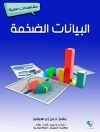Where do the digital humanities really come from? Are they really news? What are the theoretical and technical influences that participate in this scientific field that arouses interest and questions? This book tries to show and explain the main theories and methods that have allowed their current constitution. The aim of the book is to propose a new way to understand the history of digital humanities in a broader perspective than the classic history with the project of Robert Busa. The short digital humanities perspective neglects lots of actors and disciplines. The book tries to show the importance of other fields than humanities computing like scientometry, infometry, econometry, mathematical linguistics, geography and documentation.
Table of Content
Introduction ix
Chapter 1. The Republics of Letters: the Need to Communicate and Exchange 1
1.1. Republic of Letters 2
1.2. The role of journals and the beginning of scientific information 6
Chapter 2. The Science of Writings and Documentation 13
2.1. The importance of media and technology 15
2.2. A science of writing? 16
2.3. From bibliotheconomy to bibliology 18
2.4. Between documentation and documentality 19
Chapter 3. From Lists to Tables, the Question of Indexing 23
3.1. In the beginning was the index 24
3.2. The need to handle information 28
3.3. Index and hypertext 29
3.4. Indexing as a design 30
3.5. Indexing knowledge versus indexing existences 33
Chapter 4. The Need to Find Information 37
4.1. Information overabundance 37
4.2. The review process 40
4.3. Retrieving information 41
4.4. Between editorialization and information architecture 43
Chapter 5. The Researcher’s Workstation and the History of Hypertexts 47
5.1. A hypertextual history 49
5.2. Paul Otlet and proto-digital humanities 53
5.3. The success of the Web 59
Chapter 6. The Quantitative Leap: Social Sciences and Statistics 65
6.1. Statistical reasoning 65
6.2. A dispute over methods? 70
6.3. François Furet and history 72
6.4. Between totalitarian science and the end of science 75
6.5. Digital literacy or overcoming opposition 78
Chapter 7. Automatic Processing: Concordances, Occurrences and Other Interpretation and Visualization Matrices 81
7.1. Ostranenie 81
7.2. Concordances 83
7.3. Corpus creation 88
7.4. The word association method 90
Chapter 8. Metadata Systems 93
8.1. Cataloging 94
8.2. Markup language. 96
8.3. Folksonomies and the path of open digital humanities 98
8.4. The Web of data, from tree to graph 99
Chapter 9. The New Metrics: From Scientometrics to Webometrics 101
9.1. Bibliometrics and scientometrics 101
9.2. The reduction of science 103
9.3. The statistical expression of science 105
9.4. Nalimov’s works 106
9.5. Scientometrics and traditional tools 108
Chapter 10. The Map: More than the Territory 113
10.1. Cybergeography – a forerunner of digital studies? 114
10.2. The map is not (only) the territory 117
10.3. Social networks and sociometry 118
10.4. A cartographic esthetic 120
10.5. Modeling and schematics 122
Conclusion 123
Bibliography 131
Index 147
About the author
Le Deuff, Olivier, Assistant Professor (Maître de conferences) Université Bordeaux Montaigne. MICA laboratory, France.












